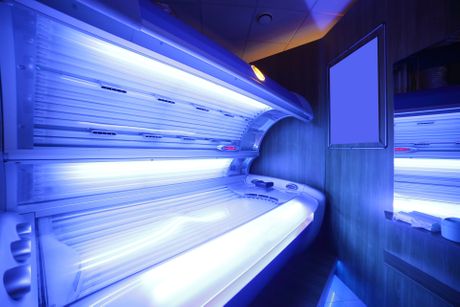Experts tell Telegraf about how harmful tanning beds are: Cancer risk increase many times over

Although it is known how harmful tanning beds are to people's health, their use, especially among the younger population, is still popular. Their use was banned for people under the age of 18 back in 2009, but this ban, according to experts, is not being respected.
That's why today at a conference dedicated to the fight against melanoma (serious form of skin cancer), an initiative to ban tanning beds in Serbia altogether has been proposed.
Director of the Institute of Public Health named after Dr. Milan Jovanovic Batut, Verica Jovanovic, told the conference today that the task of preventive institutions is twofold; first, to talk about the risk factors that lead to melanoma, and second, to explain the action of ultraviolet rays, sun protection and bad habits, to risk groups.
"We often forget about prevention and self-examination, and first we need to recognize that something is wrong, so that it is the first signal after which we will go to the chosen doctor," Jovanovic explained.
The president of the Melanoma Patients Association, Savo Pilipovic, said that this group, UPOOM, handed the initiative to ban tanning salons to Minister of Health Danica Grujicic last year.
"It is a matter of banning the use of solariums in beauty salons, if we had it, we could create a strong campaign in a short time because the ban regarding the minors is not being respected. In addition to the ban, we will also insist on controlling the implementation of that decision," Pilipovic pointed out.
A tanning bed is a device that uses UV rays to darken the skin. It is equipped with light lamps that release concentrated artificial ultraviolet (UV) rays.
Those also speaking on the topic of the harmful effects of solariums on health were Professor Dr. Danica Tiodorovic, national coordinator of Euromelanoma in Serbia, and vice president of the Association of Dermatovenerologists of Serbia and dermatologist Nevenka Dokmanovic.
According to Dr. Tiodorovic, it is estimated that more than 700 new cases of melanoma are diagnosed annually in our country, but that number is not final.
"In the observed ten-year period, an increase in the incidence rate of melanoma was registered in both sexes. It is estimated that more than 700 new cases of melanoma are diagnosed annually, however, this number is not final considering that we are recording a significant increase in melanoma in daily outpatient work, not only in the elderly population, but also in the younger population. Melanoma most often occurs between the ages of 50 and 60, but it can also happen to younger people. Everywhere in the world, and unfortunately also in our country, the number of melanomas is increasing at an earlier age, from 18 to 29 years old, with sporadic cases in the pediatric population as well," said Professor Danica Tiodorovic.
Dermatologist Nevenka Dokmanovic stressed that, even those people who go to the solarium only a few times, multiply the risk of getting skin cancer.
"There are studies that show that all those who used a tanning bed before the age of 35 increase the risk of malignant melanoma by as much as 59 percent. It has been scientifically proven that tanning beds lead to skin cancer," the dermatologist underlined.
Asked what constitutes for healthy sunbathing, Dr. Danica Tiodorovic says that 15 minutes of exposure to the sun is enough to produce the required amount of vitamin D.
"The sun's rays are necessary for the survival of life on earth, they affect the positive general condition and health of the organism, as well as control the life biorhythm. In addition, UV rays are fundamental for the synthesis of vitamin D necessary for the proper growth and structure of the bone system. However, proper behavior in the sun is necessary, which includes: regular and correct use of photoprotective creams, mechanical protection in the form of a cap or a hat, sunglasses, as well as avoiding direct sunlight between 10 am and 5 pm."
It is a well-known fact that a daily 15 minute-sun exposure is sufficient to produce the necessary amount of the vitamin D. In general, children, pregnant women, the elderly and fair-skinned people are more sensitive to solar radiation. Also, it is not recommended to expose babies and small children up to 3 years old due to their underdeveloped defense system releated to pigmentation, and the consequent allowing of deeper penetration of UV radiation," she concluded.
(Telegraf.rs)
Video: Stevan Prodanov iz Mokrina pobednik tradicionalne Tucanijade u tom mestu
Telegraf.rs zadržava sva prava nad sadržajem. Za preuzimanje sadržaja pogledajte uputstva na stranici Uslovi korišćenja.

